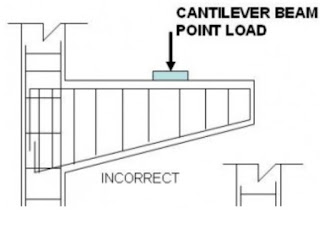different types of Ingradients in cement
- the following type of ingradients are mixed to manufacture
2. Silica(sio2)-(17-25%)-
4. Iron oxide(3-5% , <5%)-
5. zypsum (3-5%)-
of cement.
1. Lime -
-Lime provides strength and soundness to the cement.
-Lime is also called as 'calcium oxide' and is obtained from
limestone(CaCo3)
-if lime is in excess quantity then cement makes unsound
disintegration of cement.
-if it is in low quantity then low strength are recorded.
 |
| Lime powder |
- silica is also called as silicon dioxide and is obtained from
silicious rock.
- silica also provides strength to the cement , if it is in excess
then setting time and strength of cement is more.
- Alumina is the quick setting property of cement and is
obtained from aluminium ores.
- if alumina is in excess then cement sets quickly and also
reduced it's strength.
 |
| Alumina |
- It provides strength, hardness and colour (brownish) to the
cement.
- it also helps to fuse silica in presence of lime at the time of
burning and provides strength.
 |
| iron oxide |
- zypsum is also called as calcium sulphate and works as a
retarder.
- zypsum is added with the cement clinkers and it increases
the setting time of cement.
- in case of summer region , zypsum is added more quantity.
- magnesia is also called as magnesium oxides.
- magnesia also provides strength , hardness and colour
(yellowish) to the cement.
- if it is in excess the cement makes unsound and reduction
in strength.
8. Alkalis (0.1-1%)-
 |
| magnesia |
7. Sulphur (1-3%) -
- sulphur is added to cement to make it sound, we know due
to improper mixing of ingradients . cement makes unsound.
 |
| sulphur |
- alkali is like potas and soda, which are present in cement.
- in any case its value should not be more than 1%, otherwise
alkali-aggregate reaction, effloroscence or etc. effect comes
in cement.
 |
| alkali-aggregate reaction |





Comments
Post a Comment